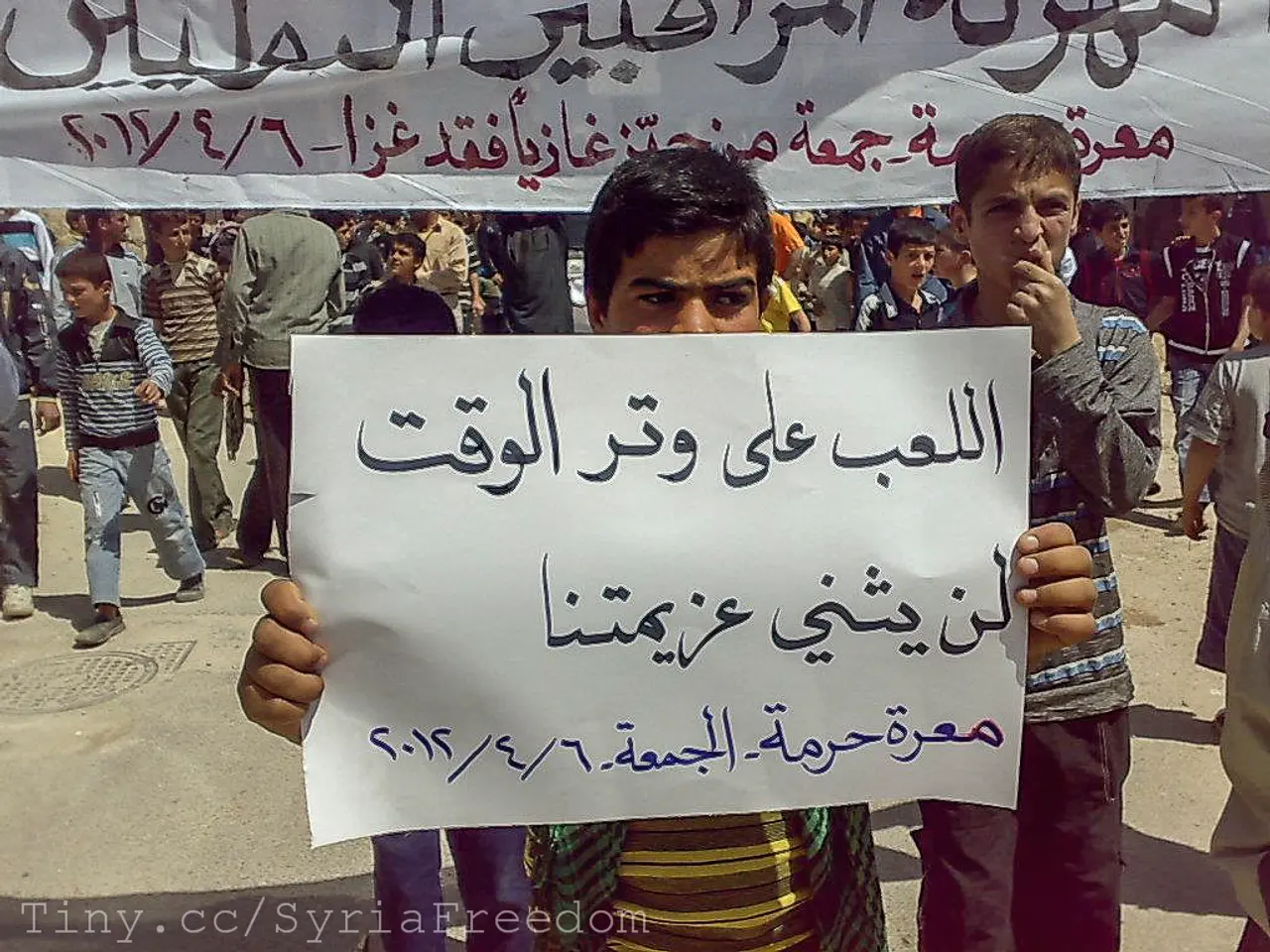Syria faces potential influence from an unofficial power, potentially causing tension.
The prolonged conflict in Syria, which has been raging for thirteen years, appears to be nearing its end. However, the situation in Syria presents a complex landscape, with human rights potentially being subjected to geostrategic interests.
The rebel group Hayat Tahrir al-Sham (HTS) has taken advantage of the volatile situation, growing stronger and gaining support. As the al-Assad government struggles to defend itself and receives less outside help, HTS waits for the opportune moment to assert its dominance.
One potential outcome could see Turkey confronting the Kurds, leading to de facto Turkish control of rebel-controlled areas. The rapid collapse of the Assadist regime was primarily caused by a combination of internal rebellion and the loss of crucial external support.
Four years ago, al-Assad was relatively close to victory, but he received direct support from Russia, significant support from Hezbollah, and the backing of an Islamic Republic of Iran. However, by 2024, Assad’s international backing collapsed. Russia was largely preoccupied with its full-scale invasion of Ukraine, Iran was weakened by an Israel-Hamas conflict, and Hezbollah had to withdraw forces to defend Lebanon, reducing their support for Assad.
A coalition of opposition groups led by HTS launched a surprise offensive in late 2024, making rapid territorial gains. This military offensive exploited the weakened government forces, resulting in the Syrian Army collapsing across major regions, and Assad fleeing Damascus on December 8, 2024.
Following the fall of Assad, power struggles emerged among various groups controlling different regions. HTS declared a caretaker government, but other armed groups, including the Syrian National Army (SNA), Syrian Defense Forces (SDF), Turkish-backed factions, and remnants of ISIL, continue to engage in hostilities, especially in northern Syria.
The region has seen ongoing conflict among these groups despite the formal end of Assad’s rule, highlighting persistent instability and competition for power. In the north, there are two strips of territory adjoining the Turkish border that are entirely controlled by Ankara-backed rebel groups.
Among the rebels reaching Damascus are a diverse group, including those opposed to the al-Assad regime for political and humanitarian reasons, as well as HTS, a terrorist organization linked to al-Qaeda. The diversity among rebels may lead to instability now that the common goal (overthrowing al-Assad) has disappeared.
The Kurdish militias are focused on autonomy for their government in northern and eastern Syria, controlling the important city of al-Raqa. Prime Minister Mohammad Ghazi al-Khalali has pledged to stay in Syria and offered to support a transition process.
The Syrian conflict has left a long historical tradition of the Orthodox Church of Antioch, one of the oldest Christian denominations in the Middle East, vulnerable. Political instability often works against religious freedom. The Israeli army is conducting operations in the Quneitra region.
In summary, the collapse of the Assadist regime was driven by the regime’s long-term internal repression, loss of critical foreign allies due to broader geopolitical conflicts, and a decisive late 2024 rebel offensive. The aftermath has been marked by fragmented power among Islamist groups, Kurdish-led forces, Turkish-backed militias, and others vying for control across Syria.
The prolonged war-and-conflicts in Syria have resulted in a complex politics landscape, with warring factions such as Hayat Tahrir al-Sham (HTS) and the Syrian National Army (SNA) competing for power. The collapse of the Assadist regime was influenced by internal rebellion, the loss of crucial external support, and geopolitical conflicts like Russia's invasion of Ukraine and the Israel-Hamas conflict. General news coverage has highlighted the inability to maintain stability in Syria, with ongoing conflicts among various groups, including terrorist organizations like HTS, Kurdish-led forces, and Turkish-backed militias.








